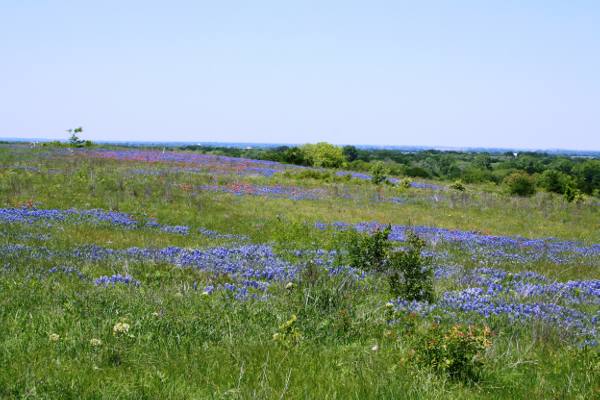August 14, 2012

To aid landowners in the middle Trinity River basin and similar areas, the Texas AgriLife Extension Service has produced a publication with step-by-step instructions on how to restore native grasslands, said agency experts.
“Many native grasslands are being lost to urbanization, fragmentation, row-crop farming and introduced grasses used for livestock production,” said Dr. Jim Cathey, AgriLife Extension program leader for wildlife and fisheries sciences. “The loss of these grasslands has resulted in a dramatic decline in numerous grassland bird species, including quail.”
The middle Trinity River basin between Dallas and Lake Livingston, as well as tall-grass prairies within the Blackland Prairie and Post Oak Savannah ecoregions, currently contain only about 1 percent of their historical native grasslands, Cathey said. The recommendations provided in the new publication, “Native Grassland Restoration in the Middle Trinity River Basin,” can be used as a guideline to help address the many strategies and procedures toward restoring native prairies.
Cathey said native bunchgrasses and forbs make ideal habitat for wildlife, such as quail and other ground-nesting birds, as well as several species of mammals, reptiles, amphibians and insects native to prairie habitats.
Topics addressed in the publication include the use and benefits of native grasslands, site selection and preparation, establishment of native vegetation, seed selection, reseeding methods, seeding rates, depth and timing, and using native grass hay for seeding. There is also a section on the use of the Trinity River Information Management System, an online mapping tool for supporting land conservation and habitat restoration decisions in the Trinity River basin.
The publication can be found on the Texas AgriLife Extension Bookstore website at http://agrilifebookstore.org.
AgriLife Extension associate Blake Alldredge said the publication was produced through the Building Partnerships for Cooperative Conservation initiative of the Trinity River basin project. The project is funded by the Texas State Soil and Water Conservation Board through a Clean Water grant from the U.S. Environmental Protection Agency. Through this initiative, AgriLife Extension has partnered with Trinity Waters, a landowner organization based in the Trinity River basin, to produce educational materials related to water and wildlife conservation for landowners.
“This new publication will certainly aid the native grassland restoration efforts of Trinity Waters, Texas Parks and Wildlife and Sand County Foundation to improve the wildlife and water quality resources in the basin through the Water As A Crop project and Western Navarro Bobwhite Recovery Initiative,” Alldredge said.
Restoring native grasslands can benefit livestock producers as well as landowners wanting to transition into wildlife management and ecotourism, he said. But restoring native grasslands is not an easy task, as it requires careful planning.
“As landowners search for ways to reduce input costs, such as fertilizer and fuel, into their land operations, native grasslands may be their answer as they can yield sufficient forage for livestock and under proper management do not require the input costs that introduced grasses do,” he said. “Also, the increase in wildlife populations can provide additional income to landowners through hunting and ecotourism opportunities.”
He said native grasslands are also important to watershed protection as they increase the water storage capacity of the soil, reduce erosion, promote groundwater recharge and provide more efficient nutrient absorption.
Alldredge said landowners may contact their local AgriLife Extension office, Texas Parks and Wildlife biologists and U.S. Department of Agriculture’s Natural Resource Conservation Service personnel for technical guidance in developing a restoration plan and for information on applying for financial assistance to help cover some costs associated with grassland restoration.
You May Also Like




